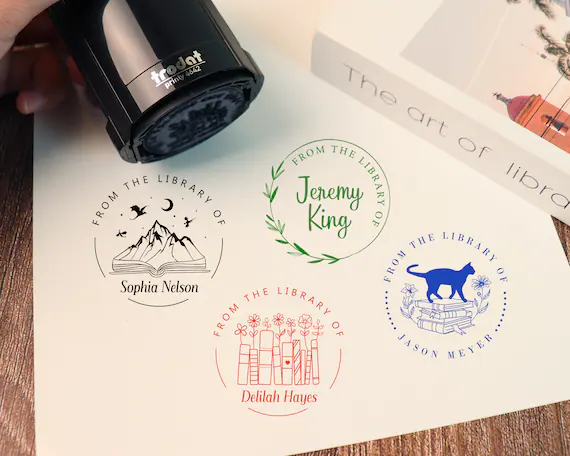What Is the Difference Between Stamp and Embossed Seal?
Introduction A stamp, also known as a seal, is a commonly used tool. Its surface is engraved with a pattern or text. To use it,

A stamp, also known as a seal, is a commonly used tool. Its surface is engraved with a pattern or text. To use it, people dip the stamp in ink and apply it to items such as paper.
Stamps are made from a variety of materials. Common stamps are rubber designs fixed to a base of paper, acrylic, or a more durable material. Nowadays, soft-glue stamps with adhesive backings that can be attached to transparent film are also popular. These stamps are less expensive and require less storage space.
In addition to the everyday stamps, there are also tools called embossing seals. These create raised impressions on materials such as paper, wax, or clay. Originally, paper embossing stamps were primarily used to certify the authenticity of documents or items, such as sealing envelopes or packaging valuables.

Embossing seals create a raised pattern on paper, an effect called “embossing.” Notaries often use them to authenticate copies of documents.
Embossing is a widely used technique that can create three-dimensional images and text on surfaces such as paper, leather, and metal. Common items like greeting cards, leather notebooks, and paper cups all use this technique.
To prevent forgery, an embossing stamp can be raised or embedded in the paper like a watermark. A regular stamp, on the other hand, uses ink to certify the authenticity of a document and the validity of the signature. The decision between a stamp and a stencil is often determined by the document type and local laws.
Although the embossed impression of an embosser is three-dimensional, it must be clear enough to be photocopied or photographed. The ink impression of a stamp is generally easier to photocopy and identify directly. This is a key difference between the two.

After understanding the differences, you may be wondering whether to choose an embosser or stamp. This depends largely on the regulations in your region.
Each region has specific requirements for whether a notary public should use an embosser or stamp. You should check your local regulations to determine whether you must use one or both. These regulations also cover details such as the stamp’s size, shape, and ink color.
If the regulations allow you to choose freely, consider your specific needs. Stamps are easy to use and leave a clear impression even on copies. Seal stamps, on the other hand, convey a formal and professional appearance. Both are reliable tools that can assist you in your work.
Ultimately, the method you choose depends on your specific needs.
Raised characters have the advantage of remaining legible even when stained or painted. Concave characters, on the other hand, can be difficult to read in certain situations.
In terms of production cost, custom embosser is generally more economical for customized, variable information or low-volume production. For large-scale, fixed content, stamping offers a more cost-effective option.
The ultimate choice depends entirely on the size and specifications of your order. Both technologies are highly reliable and can be valuable in a variety of situations.
Introduction A stamp, also known as a seal, is a commonly used tool. Its surface is engraved with a pattern or text. To use it,
Your personal library is more than just a collection of books. It’s your own world of knowledge and imagination. It shows your interests and how
Besides the design and font, a crucial yet often overlooked element is the embossing angle when selecting a custom book embosser. The embossing angle determines the
TRODISS, as China’s leading embossing stamp manufacturer, specializes in embossed seals and custom-designed designs. We engrave thousands of designs daily and have found that many
Our custom logo stamps are the highest quality. They stamp on your products clearly for the most visible perfect stamp. Our custom logo machines are the ultimate keepsake you can cherish forever.
Hot Tags
Hot Stamping Machines
Embossing Seals
Wax Seal Stamps
Keep in Touch
Annabelle Lee
Email: annabelle@trodiss.com
Add.: Room 1602, Block D, First International Business Building, Nancheng, Dongguan City, Guangdong Province, China.
Copyright © 2005-2025 Trodiss Group. All rights reserved